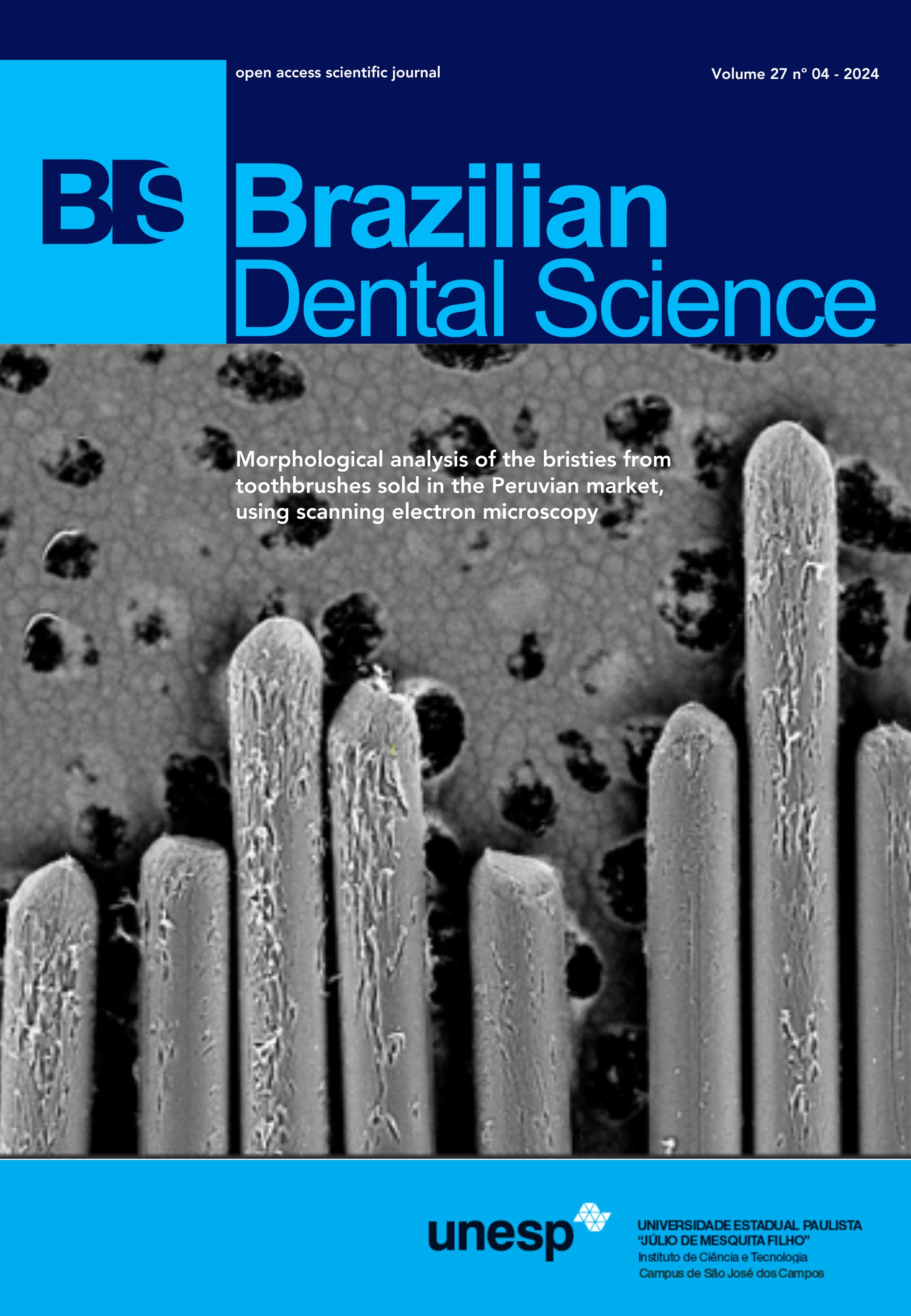Shade match, marginal adaptation and patient satisfaction: polymer infiltrated ceramic versus lithium disilicate glass ceramic anterior laminate veneers (Randomized Clinical Trial)
DOI:
https://doi.org/10.4322/bds.2024.e4391Abstract
Objective: To evaluate the shade match, marginal adaptation and patient satisfaction of VITA ENAMIC multiColor anterior laminate veneers and compare it to that of IPS e.max CAD. Material and Methods: A total of twenty-two laminate veneers were fabricated from IPS e.max CAD and VITA ENAMIC multiColor in the anterior zone, eleven veneers for each group. The patients were randomly divided into two equal groups according to the restorative material. Group EX (control group) eleven IPS e.max CAD veneers and Group EMC (intervention group) eleven VITA ENAMIC multiColor veneers. Shade match and marginal adaptation was assessed using modified USPHS criteria and patient satisfaction was evaluated through visual analogue scale (VAS), immediately after cementation. Data were analyzed using CHI- square test. P 0.05 was considered statistically significant. Results: The results showed that there was no statistically significant difference between the two groups in terms of shade matching, marginal adaptation and patient satisfaction. Conclusion: IPS e.max CAD and VITA ENAMIC multiColor veneers provided a successful clinical performance in terms of shade match, marginal adaptation and patient satisfaction.
KEYWORDS
CAD-CAM; Ceramics; Color perception; Hybrid; Lithium disilicate.
Downloads
Published
How to Cite
Issue
Section
License
Brazilian Dental Science uses the Creative Commons (CC-BY 4.0) license, thus preserving the integrity of articles in an open access environment. The journal allows the author to retain publishing rights without restrictions.
=================




























